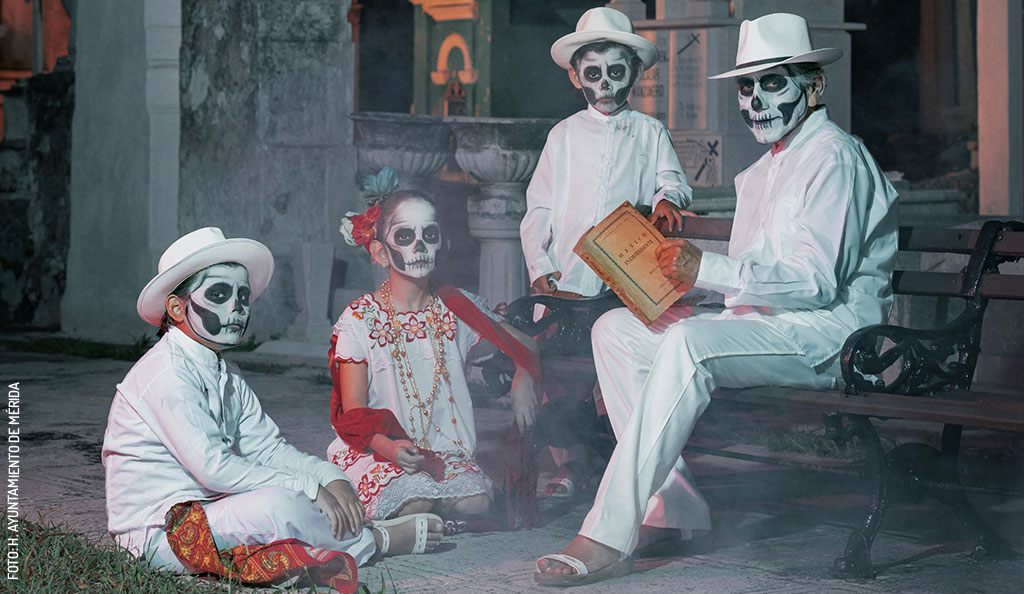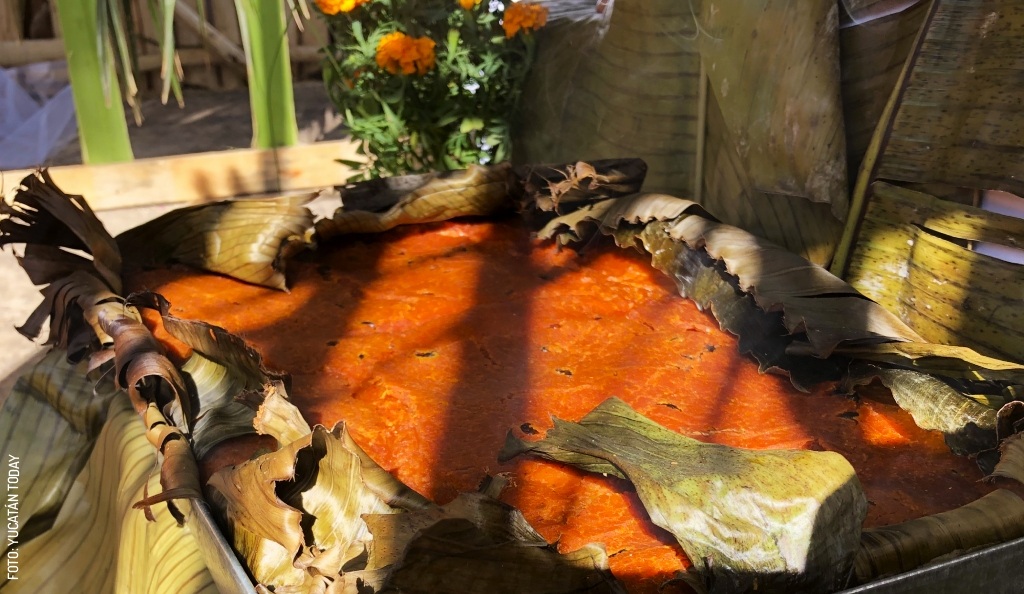
All about Pib, a traditional Yucatecan Day of the Dead dish
All about Pib, a traditional Yucatecan Day of the Dead dish, All About Pib… or Mukbilpollo, “Pib is in the air”
Freshly unearthed from a pit in the ground, today we bring you one of the most anticipated and beloved flavors of Yucatecan cuisine: mukbilpollo, or, as many call it, pib. Mukbilpollos are prepared only for Janal Pixan. This is a very special dish made and consumed exclusively during this time (late October and throughout November) in nearly every Yucatecan home, as it is an essential element of the altar dedicated to deceased family members.
What does pib or mukbilpollo mean?
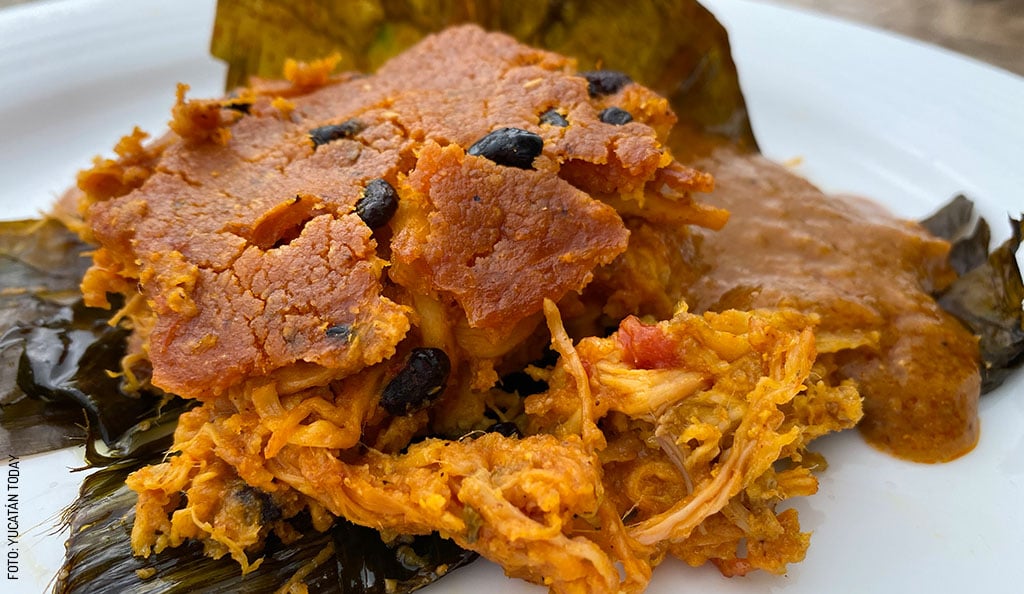 If you're visiting during this season, you've probably heard about this dish, which is similar to a giant tamal. Its name is Maya and refers to the traditional cooking method known as píib. This method involves digging a hole in the ground (this is what is called píib), at the bottom of which a fire is lit and then covered with rocks and wood; the food is placed on top, well covered, and then the hole is covered with banana leaves and earth. As the materials heat up, the food is cooked. This is how mukbilpollo or pib is made. After the right amount of time, it's unearthed and served. This cooking method can give any dish a delicious and unique flavor, and pib or mukbilpollo is certainly one of them, though nowadays, mukbilpollos can also be cooked in an oven.
If you're visiting during this season, you've probably heard about this dish, which is similar to a giant tamal. Its name is Maya and refers to the traditional cooking method known as píib. This method involves digging a hole in the ground (this is what is called píib), at the bottom of which a fire is lit and then covered with rocks and wood; the food is placed on top, well covered, and then the hole is covered with banana leaves and earth. As the materials heat up, the food is cooked. This is how mukbilpollo or pib is made. After the right amount of time, it's unearthed and served. This cooking method can give any dish a delicious and unique flavor, and pib or mukbilpollo is certainly one of them, though nowadays, mukbilpollos can also be cooked in an oven.
Note: In Maya, píib refers both to the underground oven where mukbilpollos are traditionally cooked, and to the dish itself. To differentiate them, at Yucatán Today we refer to the dish as pib and the oven as píib.
“Pib is in the air”

In Mérida, as well as all the towns of Yucatán, markets gear up to offer the necessary ingredients for each family to prepare their own version of mukbilpollo or pib. In the absence of space (or knowledge) to prepare it in a píib, the dish can be baked in home ovens, or many bakeries offer the service.
The smells of banana leaves, bags of espelón (a seasonal bean), tomatoes, epazote leaves, along with round and circular pans for baking, start appearing during this time, as do traditional sweets and all the foods that bring life, fragrance, and flavor to the altars. It’s truly a delight to walk through the markets and see how everything takes on a different rhythm, a mystical feel.
What ingredients go into a Yucatecan pib or mukbilpollo?
The main ingredients of pib or mukbilpollo are masa and lard, achiote, meat (chicken or pork), k’óol (also known as Yucatecan pebre, a broth thickened with masa), onions, tomatoes, and epazote. Each family prepares their mukbilpollos differently, as the seasoning depends on the preferences of our loved ones who are no longer with us. On October 31, the day we await the children who have passed away, the pibes usually don’t contain espelón or chili, as this is how the little ones liked to eat them. On November 1, when we expect the visit of our deceased adults, pibes are prepared according to the preferences of the departed loved ones.
Are you interested in making your own mukbilpollo? We have a complete recipe with beginner-friendly instructions so you can make it from scratch in your own home oven.
What makes pib a different dish from the rest?
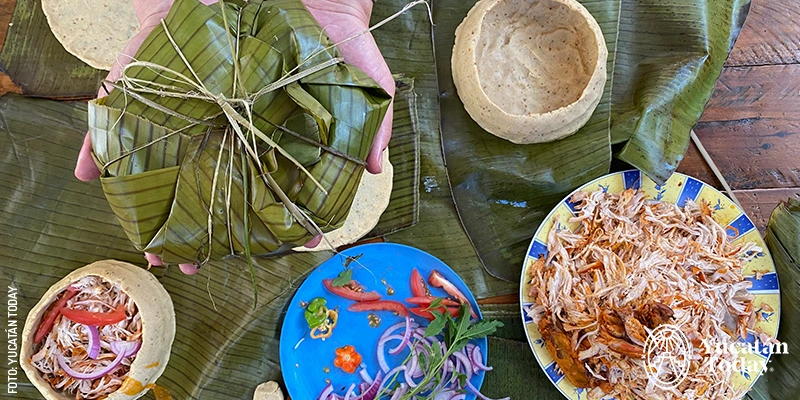
As mentioned before, pib is only made during the days of Finados (days of the deceased) or Janal Pixan, which makes it a dish rich in tradition and meaning. Not only is it the main dish on the altars, but it's also a dish that families come together to prepare and eat every year, creating an opportunity to remember those who are no longer physically with us to share it.
To prepare it, families gather early, and everyone has a role; the youngest usually clean the banana leaves (a task that's not dangerous), while others prepare the masa, and some work on the heart of the mukbilpollo (which gives it its flavor): the k’óol.
How many pibes are made in a batch?
It's customary to make several pibes according to the number of family members, as for two or three days, breakfast, lunch, and dinner will consist of pib. There are modern versions that include different fillings like ham and cheese, pork rinds, or even fried octopus. What remains consistent in all cases is the delicious aroma that gives rise to the famous phrase: “ya huele a pib (the smell of pib is in the air)."
As you can see, this whole ritual brings families together and wraps them in an atmosphere of nostalgia as they remember their loved ones; at the same time, the air is filled with laughter, beautiful anecdotes, and memories. This helps keep alive one of the most important traditions in Yucatecan culture: Finados or Janal Pixan.
How to try mukbilpollo
If you’re in Yucatán during Finados and have the chance to try a delicious pib, I guarantee you’ll enjoy it even more now that you know its history and all the love and dedication behind its preparation. There’s no excuse not to eat and celebrate with Yucatecos: although Janal Pixan is a celebration that takes place within homes and families, many restaurants and local kitchens will be serving it during this time.
When is pib or mukbilpollo eaten in Yucatán?
In Mérida, people usually start eating pib on October 31, but it can be found in restaurants even earlier. If you plan to order one, it's a good idea to do so in advance, as the demand is typically very high. In other parts of the state, it's most common to eat it during the biix or farewell of the souls, either on November 9 or during biix-mes, on November 30.
An extra: What do you know about the píib, the Yucatecan underground oven?

The technique of cooking in a píib, in case you’re unfamiliar, goes something like this: a hole is dug and filled with dry wood, usually in the family solar or backyard. In Yucatán, the wood used is typically from catzin or chukum, both common trees in the region; the smoke from these woods gives the food a very special flavor and aroma. On top of the wood over the fire, stones are placed. As the wood burns below, the stones heat up; at the end, the stones remain at the bottom of the hole, and the food, which is prepared in a tin container, is placed on top of them. The hole is then covered with zinc sheets (similar to those used for roofing) and sealed with dirt.
The cooking method using a píib oven dates back to ancient times; the Maya used this method because it was efficient and simple. There was time and opportunity to carry out ceremonies and rituals while the food practically cooked itself, and many dishes could be prepared at once. There was no need to keep an eye on multiple pots during the process.
The cooking time depends on what’s being prepared; for example, lechón al horno (a roasted suckling pig) can take up to 22 hours, while a mukbilpollo, the traditional tamal for Janal Pixan or Day of the Dead, usually cooks in about two hours.
What is cooked in a píib or Maya oven?
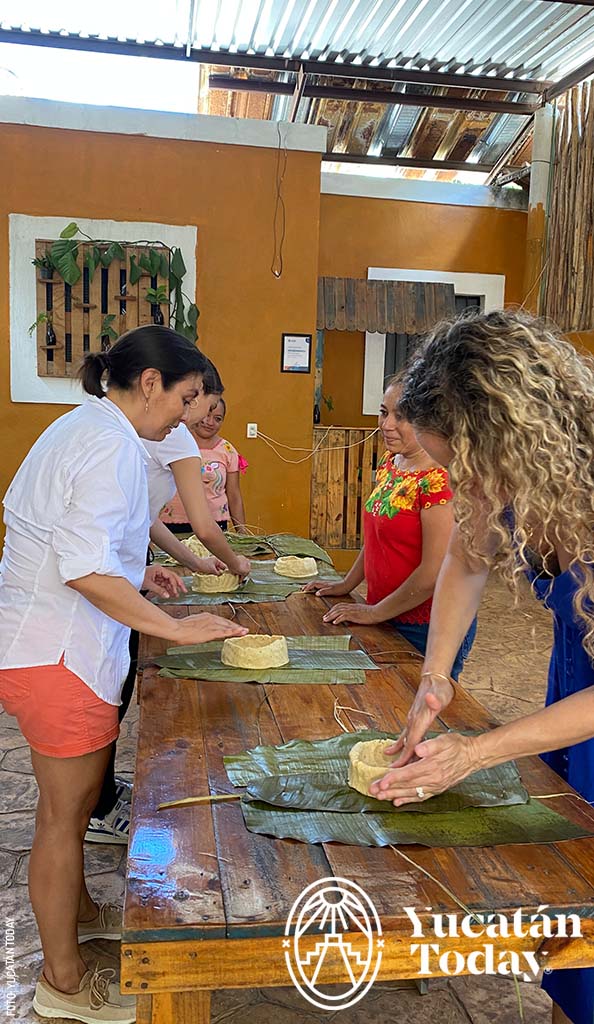 There are no limits to what can be prepared in a píib. The most well-known dishes are cochinita pibil and pollo pibil, lechón, and the aforementioned mukbilpollo. It’s very common to see food stalls advertising “cochinita enterrada (buried cochinita),” for example. A leg of venison can be marinated, seasoned, and cooked this way. But you can also prepare soupy dishes, like turkey relleno negro or frijol con puerco (beans with pork), and even dishes like tikin-xik, a fish stew typical of the Yucatecan coast.
There are no limits to what can be prepared in a píib. The most well-known dishes are cochinita pibil and pollo pibil, lechón, and the aforementioned mukbilpollo. It’s very common to see food stalls advertising “cochinita enterrada (buried cochinita),” for example. A leg of venison can be marinated, seasoned, and cooked this way. But you can also prepare soupy dishes, like turkey relleno negro or frijol con puerco (beans with pork), and even dishes like tikin-xik, a fish stew typical of the Yucatecan coast.
Today, cooking in a píib is reserved for special occasions like a birthday, baptism, or other family celebrations. These events and the preparation of everything—from the food to the píib—are overseen by the oldest women in the family. The men help with the heavy work, such as moving the stones, digging the hole, cutting and gathering wood and branches, and later removing the dirt and sheets once the cooking is done.
Once limited to villages and special occasions, the píib has become much more “visible” today thanks to the interest of food lovers, websites, and the arrival of many people from not only other parts of México but from abroad as well. It’s becoming increasingly common to see dishes advertised in Mérida’s restaurants as “authentic” and “prepared in a píib.” Some restaurants even have their píibes on display so that visitors and diners can watch as food is extracted from the earth.
If you get the chance, try to be present when the food is brought forth from the ground! The smell of warm earth, along with the fragrance of smoke and the aroma of the spices and ingredients, will make for a sublime and unforgettable Yucatecan experience.
The original text comes from three sources:
Tradition and Flavor? A Pib, Please by Arianne Osalde. First published in Yucatán Today print and digital magazine no. 418, in October 2022.
The Life of Pi(b) by Ralf Hollmann. First published in Yucatán Today print and digital magazine no. 382, in October 2019.
Pibes: Delicious Worship by Violeta H. Cantarell. First published in Yucatán Today print and digital magazine no. 346, in October 2016.
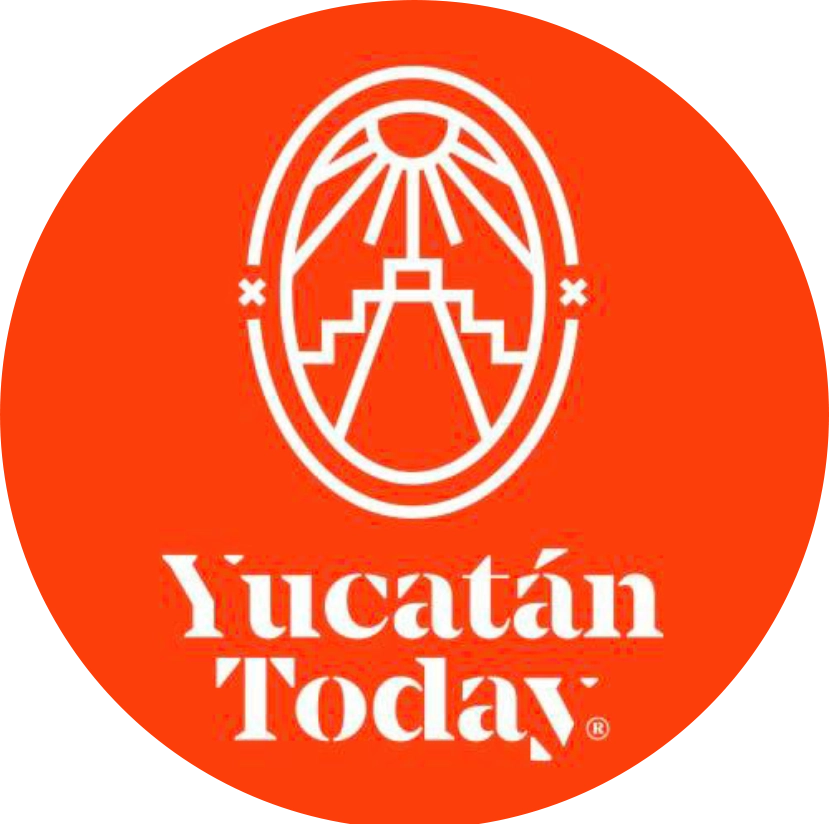
Author: Yucatán Today
Yucatán Today, the traveler's companion, has been covering Yucatán’s destinations, culture, gastronomy, and things to do for 38 years. Available in English and Spanish, it’s been featured in countless travel guides due to the quality of its content.
In love with Yucatán? Get the best of Yucatán Today delivered to your inbox.
Related articles
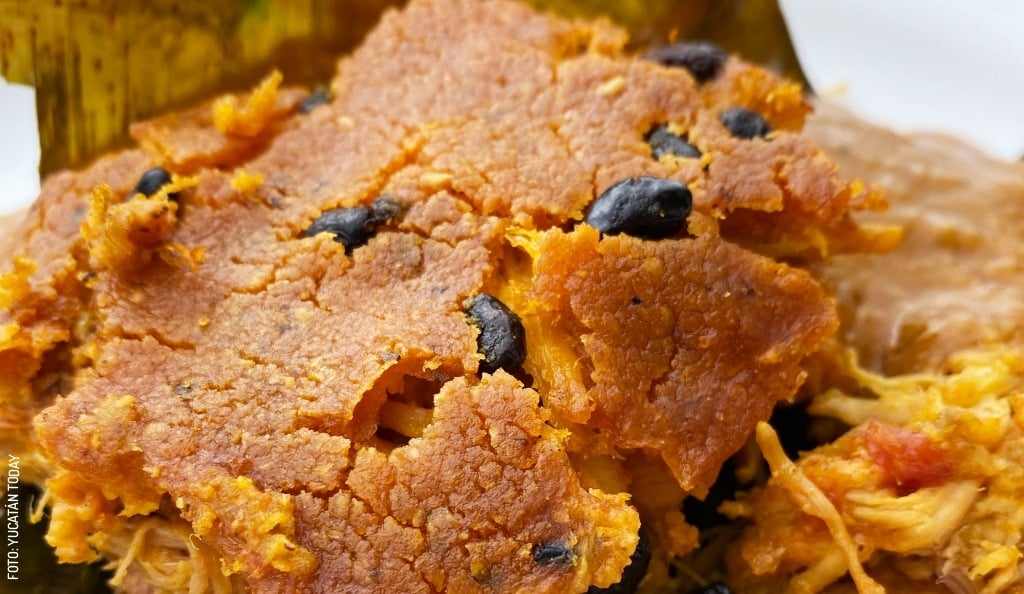
An authentic recipe for Yucatán’s mukbilpollo or pib—for beginners
Make your own Pib or Mukbilpollo (Día de Muertos tamal) from scratch: detailed instructions on how to make it at home, step by step.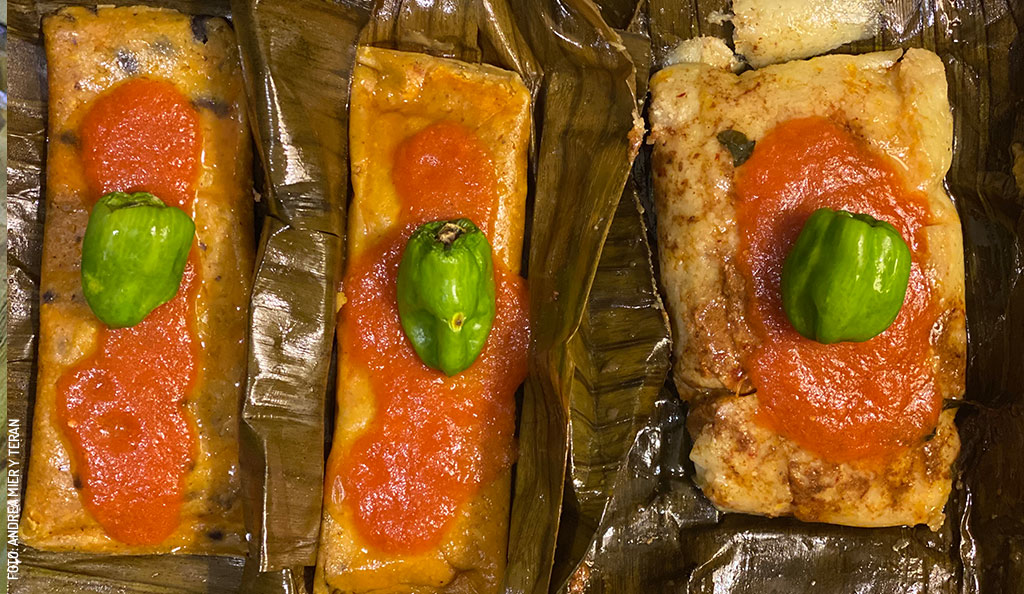
The Multiverse of Yucatecan Tamales
Discover the variety of Yucatecan tamales beyond the classic pib. Learn the history, ingredients, and secrets of vaporcitos, tamales colados, brazo...